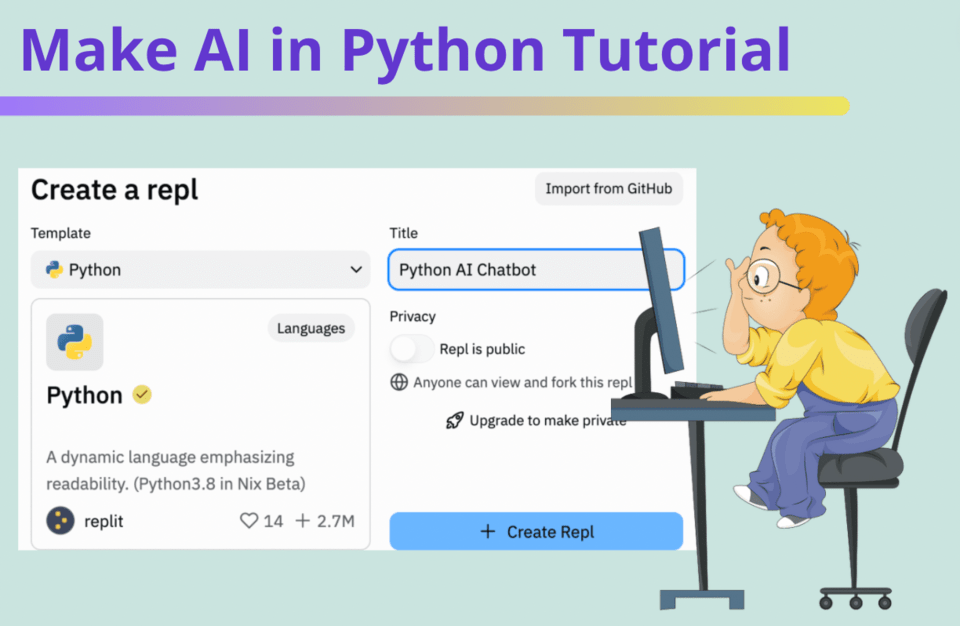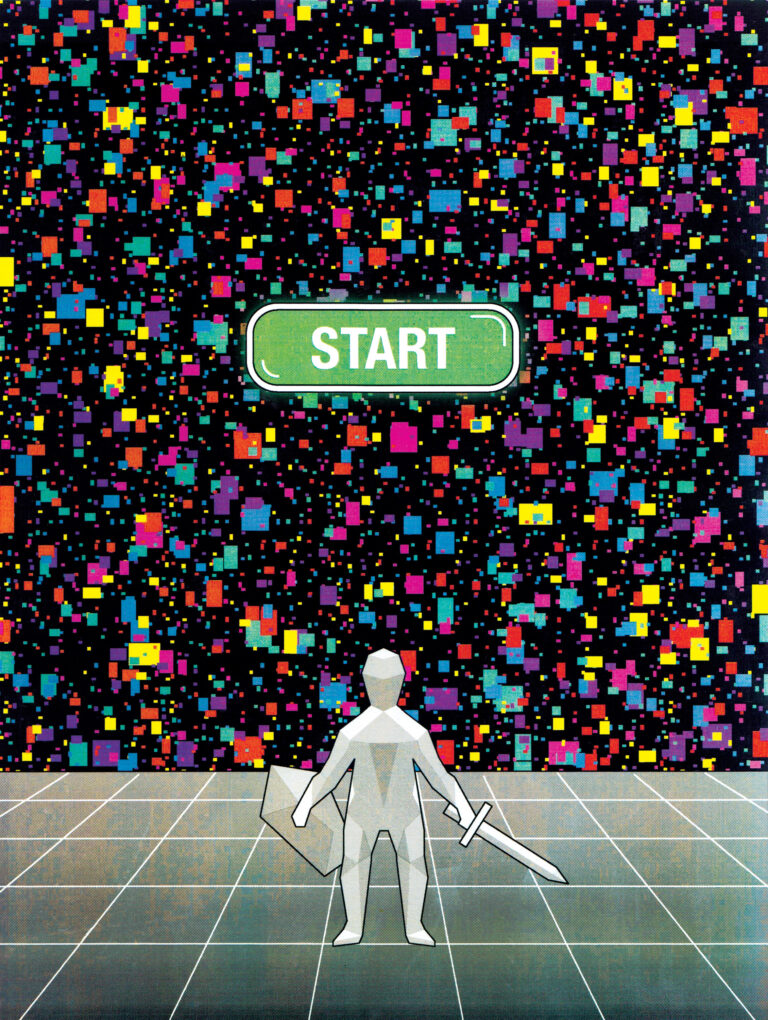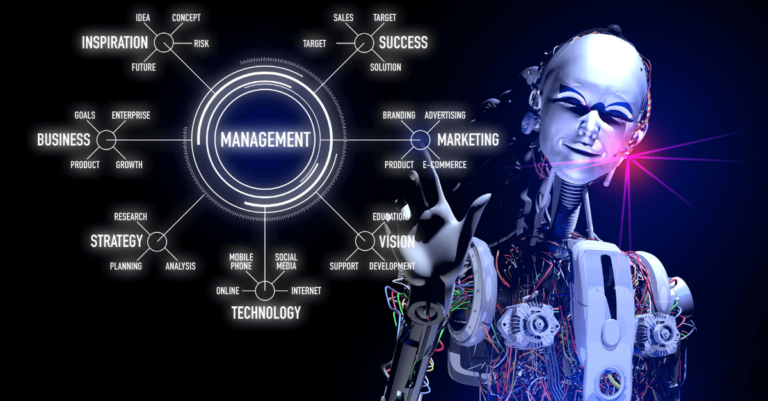To make an AI, start by defining its purpose and gathering relevant data. Then, choose the right algorithms and tools.
Creating artificial intelligence involves a series of well-defined steps. First, identify the problem you want the AI to solve. This helps in collecting the right data, which is crucial for training the AI. Next, select suitable algorithms that align with your goals.
For instance, machine learning algorithms are often used for predictive tasks. Tools like TensorFlow or PyTorch can aid in building and training your AI model. Testing the AI rigorously ensures it performs accurately. Finally, deploy the AI and continuously monitor its performance to make necessary adjustments. This systematic approach helps in developing efficient and effective AI solutions.

The Dawn Of Artificial Intelligence
The dawn of artificial intelligence marks a thrilling era in technology. AI began as a concept and has turned into a powerful tool. This journey is full of exciting developments and discoveries.
Tracing Ai’s Historical Roots
Artificial Intelligence has deep historical roots. Let’s look back at its origins.
In the 1950s, Alan Turing introduced the idea of machines thinking. He created the Turing Test to check a machine’s ability to show intelligence.
During the 1960s, researchers built early AI programs. These programs solved mathematical problems and played games like chess.
Key Milestones In Ai Development
AI has achieved many key milestones over the years. Here are some notable moments.
- 1956: The term “Artificial Intelligence” was coined at the Dartmouth Conference.
- 1966: ELIZA, an early chatbot, was created. It mimicked human conversation.
- 1997: IBM’s Deep Blue defeated world chess champion Garry Kasparov.
- 2011: IBM’s Watson won the game show Jeopardy! against human champions.
- 2016: Google’s AlphaGo beat a world champion in the game Go.
AI’s journey has been long and exciting. It has transformed from simple programs to complex systems.
Below is a table summarizing these key milestones:
| Year | Milestone |
|---|---|
| 1956 | Term “Artificial Intelligence” coined |
| 1966 | Creation of ELIZA chatbot |
| 1997 | Deep Blue defeated Garry Kasparov |
| 2011 | Watson won Jeopardy! |
| 2016 | AlphaGo beat Go champion |
Core Principles Of Ai
The Core Principles of AI form the foundation of artificial intelligence. Understanding these principles will help you create your own AI. These principles include machine learning, neural networks, and deep learning.
Understanding Machine Learning
Machine learning is a subset of AI. It allows systems to learn from data. The goal is to enable computers to improve from experience. There are three main types of machine learning:
- Supervised Learning: The system learns from labeled data.
- Unsupervised Learning: The system finds patterns in unlabeled data.
- Reinforcement Learning: The system learns through rewards and penalties.
Neural Networks And Deep Learning
Neural networks are a key part of AI. They mimic the human brain. A neural network consists of layers of nodes. These nodes are called neurons. Each neuron processes information. Together, they solve complex problems.
Deep learning is a type of neural network. It has many layers. These layers allow the system to learn from vast amounts of data. Deep learning excels in tasks like image and speech recognition.
| Type | Description |
|---|---|
| Supervised Learning | Learning from labeled data. |
| Unsupervised Learning | Finding patterns in unlabeled data. |
| Reinforcement Learning | Learning through rewards and penalties. |
Understanding these core principles of AI is essential. They provide the basis for creating intelligent systems. With this knowledge, you can start building your own AI projects.
Choosing The Right Problem To Solve
Creating an AI starts with identifying the right problem. Choosing the right problem is crucial. It sets the foundation for the entire project. Let’s dive into the steps that will help you make a wise choice.
Identifying A Need
Identifying a need is the first step. Ask yourself, what problem needs solving? Look around you. Are there repetitive tasks? Are there processes that need automation?
Consider the following:
- Customer service
- Data analysis
- Healthcare diagnosis
- Supply chain management
Choose a problem that affects many. It should solve an existing need.
Feasibility And Impact Assessment
Next, assess the feasibility and impact. Can AI solve this problem?
Consider these factors:
| Factor | Description |
|---|---|
| Data Availability | Is there enough data to train the AI? |
| Technical Complexity | Is the problem too complex? |
| Resources | Do you have the necessary resources? |
| Potential Impact | How much will solving this problem help? |
Choose problems that are feasible and impactful. This ensures success and maximizes value.
Data: The Fuel Of Ai
Data is the lifeblood of artificial intelligence. Without data, AI cannot function. The quality and amount of data you have directly impact AI’s performance. Let’s explore how to gather and prepare data for AI.
Gathering Quality Data
Gathering quality data is crucial. Poor data leads to poor AI performance. Here are some ways to gather good data:
- Surveys: Collect data directly from people.
- Web Scraping: Extract data from websites.
- APIs: Use Application Programming Interfaces to get data.
- Open Data Sets: Find free data sets online.
Use multiple sources to gather diverse data. This ensures your AI learns well.
Data Cleaning And Preparation
Data cleaning and preparation are essential steps. Raw data often contains errors and inconsistencies. Clean data improves AI accuracy.
Here are steps to clean and prepare data:
- Remove Duplicates: Delete duplicate entries.
- Handle Missing Values: Fill or remove missing data points.
- Normalize Data: Scale data to a standard range.
- Convert Data Types: Ensure data types are consistent.
These steps make your data reliable for AI training.
| Step | Action | Purpose |
|---|---|---|
| 1 | Remove Duplicates | Ensure unique data points |
| 2 | Handle Missing Values | Fill or remove gaps |
| 3 | Normalize Data | Standardize data range |
| 4 | Convert Data Types | Ensure consistency |
Clean data leads to better AI results. Invest time in proper data preparation.
Building Your Ai Model
Creating an AI model involves several crucial steps. It starts with selecting the right algorithm. Then, you need to train and test your model. Let’s dive into these steps.
Selecting An Algorithm
Choosing the right algorithm is key. It determines how your AI will learn. Here are some popular algorithms:
- Linear Regression: Best for predicting numerical values.
- Decision Trees: Great for classification tasks.
- Neural Networks: Ideal for complex patterns.
- K-Nearest Neighbors (KNN): Useful for similarity-based tasks.
Each algorithm has strengths and weaknesses. Pick one that fits your problem.
Training And Testing Your Model
After choosing an algorithm, the next step is training your model. Use a dataset for this purpose. Follow these steps:
- Split the dataset into two parts: training and testing.
- Use the training part to teach your model.
- Measure the model’s performance with the testing part.
Here is a sample code snippet for splitting a dataset using Python:
from sklearn.model_selection import train_test_split
# Assuming X is your features and y is your labels
X_train, X_test, y_train, y_test = train_test_split(X, y, test_size=0.2, random_state=42)
During training, the model learns patterns in the data. Then, you evaluate its accuracy with the test data. This ensures the model works well on new data.
Use metrics to judge performance. Common metrics include:
- Accuracy: Ratio of correctly predicted observations.
- Precision: Accuracy of positive predictions.
- Recall: Ratio of true positives to actual positives.
- F1 Score: Harmonic mean of precision and recall.
Training and testing your model ensures it’s ready for real-world applications.

Refining Ai Performance
Creating an AI model is just the beginning. To achieve optimal results, refining AI performance is crucial. This process involves tuning hyperparameters and evaluating model accuracy. Let’s dive into these essential steps.
Tuning Hyperparameters
Hyperparameters are settings that control the learning process. Adjusting them can significantly impact AI performance.
- Learning Rate: Controls how much to change the model in response to errors.
- Batch Size: Number of training examples used in one iteration.
- Epochs: Number of times the learning algorithm sees the entire dataset.
Finding the right combination of hyperparameters is like finding the perfect recipe. Grid Search and Random Search are common methods used for this purpose.
| Hyperparameter | Impact |
|---|---|
| Learning Rate | Too high can overshoot, too low can slow learning. |
| Batch Size | Small batches improve accuracy, large batches speed up training. |
| Epochs | More epochs can improve performance but risk overfitting. |
Evaluating Model Accuracy
Evaluating model accuracy ensures the AI is performing as expected. Accuracy is a measure of how often the model is correct.
- Split Data: Divide the data into training and testing sets.
- Train Model: Use the training set to train the model.
- Test Model: Use the testing set to evaluate performance.
Common metrics include Precision, Recall, and F1 Score. These metrics provide a clear picture of model performance.
- Precision: Fraction of true positives among all positive predictions.
- Recall: Fraction of true positives among all actual positives.
- F1 Score: Harmonic mean of precision and recall.
Ai In Practice
Artificial Intelligence (AI) is transforming various industries. It offers innovative solutions to complex problems. Understanding AI in practice helps to see its real potential. Let’s delve into how AI is applied in the real world.
Real-world Applications
AI is used in many fields. Here are some key applications:
- Healthcare: AI assists in diagnosing diseases. It helps to analyze medical images.
- Finance: AI detects fraud. It predicts stock market trends.
- Retail: AI recommends products. It manages inventory effectively.
- Transportation: AI powers self-driving cars. It optimizes route planning.
- Customer Service: AI chatbots provide 24/7 support. They handle customer queries efficiently.
Case Studies: Successes And Failures
Examining case studies reveals AI’s impact. Here are some notable successes and failures:
| Case Study | Success/Failure | Description |
|---|---|---|
| IBM Watson in Healthcare | Success | IBM Watson helped doctors diagnose rare diseases. It improved patient outcomes. |
| Tesla’s Autopilot | Success | Tesla’s AI-powered cars reduce accidents. They enhance driving safety. |
| Microsoft Tay | Failure | Microsoft’s chatbot Tay learned inappropriate behavior. It was shut down in 24 hours. |
| Google Flu Trends | Failure | Google Flu Trends overestimated flu cases. It showed the limits of AI in predicting diseases. |
Learning from these cases helps in better AI implementation. Successful AI projects offer insights into best practices. Failures highlight the importance of careful planning and monitoring.

Ethics And Future Of Ai
The development of AI brings significant ethical considerations and future implications. Understanding these aspects is crucial for responsible AI creation and usage.
Navigating Ethical Dilemmas
AI can solve many problems but also raise ethical dilemmas. Developers must consider these issues:
- Privacy: AI systems can collect and analyze vast amounts of data. Protecting user privacy is essential.
- Bias: AI can inherit biases from data. Ensuring fairness and equality is vital.
- Transparency: AI decision-making processes should be transparent. Users need to understand how decisions are made.
- Accountability: Determine who is responsible for AI actions. Clear accountability prevents misuse.
Addressing these ethical concerns ensures AI benefits society positively.
Predicting Future Ai Trends
AI technology evolves rapidly. Predicting future trends helps prepare for upcoming changes:
- AI Integration: AI will integrate more into daily life. Expect smarter homes and workplaces.
- Healthcare: AI will revolutionize healthcare. Improved diagnostics and personalized treatments will be common.
- Education: AI will enhance education. Personalized learning experiences will become standard.
- Workforce: AI will change job markets. New skills will be required, and some jobs may be automated.
Staying informed about these trends helps adapt and utilize AI advancements.
Frequently Asked Questions
How Can I Build An Ai?
To build an AI, start by learning programming languages like Python. Study machine learning concepts and algorithms. Use libraries such as TensorFlow or PyTorch. Gain experience with data preprocessing and model training. Practice by working on real-world projects.
Can I Create My Own Ai For Free?
Yes, you can create your own AI for free using platforms like TensorFlow, PyTorch, and online tutorials.
How To Make Ai For Beginners?
Start with learning Python and basic machine learning concepts. Use online courses, tutorials, and resources. Practice by building simple projects, like chatbots or image classifiers. Join AI communities for support and guidance.
Is It Possible To Make An Ai Of Yourself?
Yes, you can create an AI model based on your data and behavior. It requires significant technical skills and resources.
Conclusion
Creating an AI can be a rewarding and fascinating journey. By following the right steps, you can successfully develop your AI project. Remember to stay updated with the latest advancements in AI technology. With dedication and continuous learning, your AI can achieve impressive results.
Happy coding!





